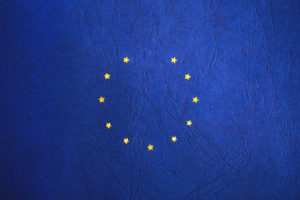
An EU trade mark (formerly known as a Community Trade Mark) provides protection for your trade marks in all countries of the EU, including the UK. Once the UK leaves the EU, any EU trade marks you have registered will continue in force but they will no longer apply within the UK.
If you’ve “doubled up” and have both a UK and an EU trade mark, then this shouldn’t make any material difference to you. If you’ve only registered an EU trade mark, then the situation is more complex, and the position will depend on whether or not we leave the EU with a negotiated deal.
Further reading: Registered trade marks provide valuable protection for your trading names, logos and other brand identities. See our article; ‘Registering Your Trade Marks’ for further information generally.
EU Trade Marks – Leaving with a deal
If the UK leaves the EU with a deal along the lines of the current negotiated withdrawal agreement, EU trade marks will continue to have effect in the UK until 31st December 2020 (though it’s not inconceivable that the UK and EU might agree to push that date back, given that Brexit is now delayed). On that date, the UK intellectual property office (IPO) will automatically create an equivalent right within the UK (without the need to pay fees). So you’ll then have both an EU trade mark (applying to all the continuing EU countries) plus a UK mark. They will become effectively two separate marks, which will be renewable and enforceable separately.
If you have an EU trade mark application pending on 31st December 2020, then you’ll have to make a fresh application to the IPO for a UK mark, though you’ll be able to claim a priority date for filing as the same date as the EU application. The significance of the priority date is that, if someone tries to register a trade mark similar to yours after the priority date but before the date you make your UK application, you’ll still be treated as having made the application first.
EU Trade Marks – Leaving without a deal
 If the UK leaves the EU without a deal, then the Government has stated that EU trade marks will be given the same protection in the UK with “minimal administrative burden”, though it hasn’t indicated whether this will be automatic or whether an application will be necessary, or whether fees will be payable. There is of course a danger that any formal application process could leave the IPO swamped during the period following exit, and the sensible option would therefore be for the Government to avoid this requirement.
If the UK leaves the EU without a deal, then the Government has stated that EU trade marks will be given the same protection in the UK with “minimal administrative burden”, though it hasn’t indicated whether this will be automatic or whether an application will be necessary, or whether fees will be payable. There is of course a danger that any formal application process could leave the IPO swamped during the period following exit, and the sensible option would therefore be for the Government to avoid this requirement.
As with the withdrawal agreement option, if you have any EU applications pending if the UK leaves without a deal, the Government has stated it will still allow a priority date equal to the EU application date.
EU Trade Marks – In summary
If the UK leaves the EU with a deal similar to the current negotiated withdrawal agreement, then you should get a UK trade mark automatically, and without cost, at the end of the transitional period. If the UK leaves without a deal, then it’s possible there may be an application process and possible there may be a cost (but equally possible there may be neither). It’s also likely that any application process could be heavily delayed if the IPO is swamped with such applications and holders of EU trade marks may wish to consider applying for a UK trade mark sooner rather than later to avoid the risk of being caught in the potential backlog.
If you want to discuss any aspect of EU or UK trade mark registration, please contact Matt Worsnop on 0116 281 6235 or email matt.worsnop@bhwsolicitors.com.
Categorised in: Corporate and Commercial, News
Tags: Brexit, Commercial Law, Company Law, EU, Trade Marks